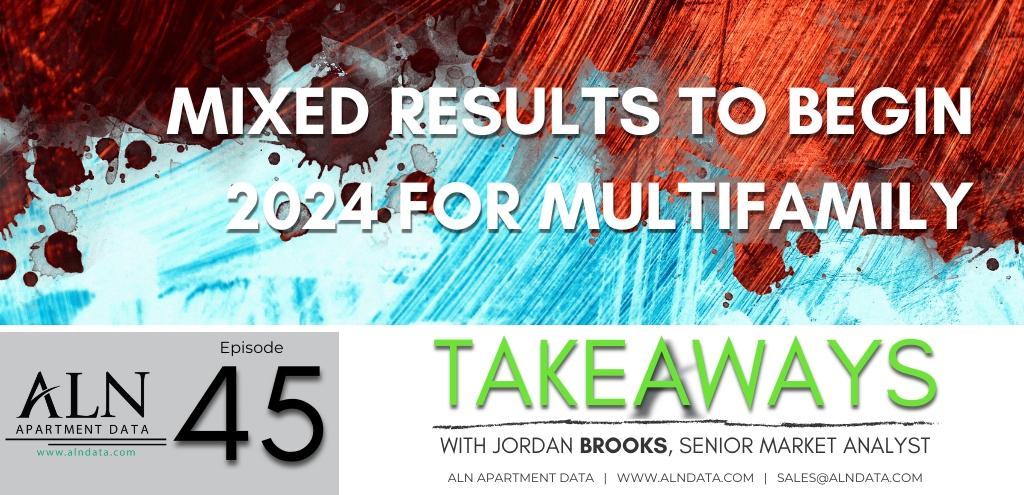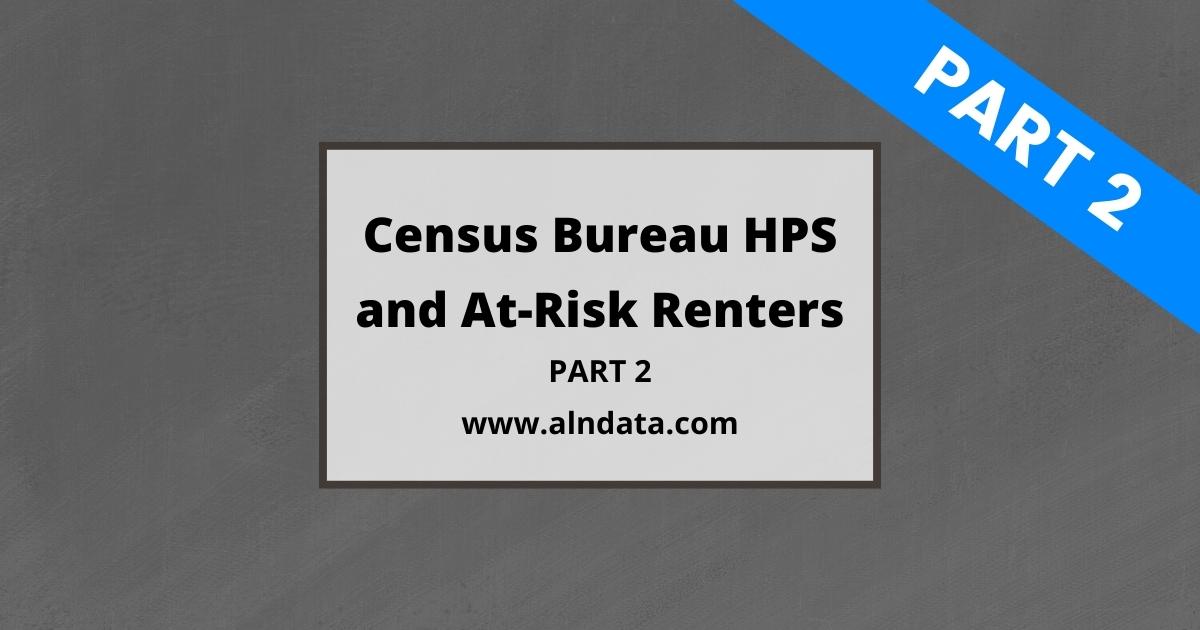Census Bureau HPS and At-Risk Renters – Part 2
In a recent blog post we dug into the part of the latest release of the Census Bureau’s Household Pulse Survey (HPS) dealing with renters who self-report being at risk of near-term eviction. It would be beneficial to read that post prior to this one, as here the focus will be more on a change-over-time view of the data rather than rehashing some important information from the first post.
Self-Reporting vs Eviction Filings
One issue with the HPS data is the variance between self-reported eviction risk and actual eviction risk. This can be difficult to quantify for a number of reasons, but we can make some broad observations. One issue was addressed in the previous blog post on this topic: 40% of those reported as Very Likely or Somewhat Likely to be evicted within two months were also reported as only one month behind on rent.
Another issue comes to the forefront when layering Eviction Lab data onto the Census HPS data. According to the HPS Week 42 data, covering January 26 through February 7th, about 4.4 million people were reported as living in households at risk of eviction within the next two months. Putting aside the fact that this would indicate a larger problem six months ago compared to the recent breathless reporting of 3.2 million such renters in the newest data release, the natural question is: where were all of those evictions or eviction filings?
Census Bureau and Eviction Lab
As discussed in the previous post, high-quality national eviction data is hard to come by and it is not something ALN tracks. Eviction Lab does not provide a national data set either but does have a handful of states available. While data quality issues are likely to be more of a problem with the state-level HPS data than the national data set, the state-level data can provide some useful examples.
One point of overlap in available data was Missouri. A little more than 41,000 people were categorized as either Very Likely or Somewhat Likely to face eviction within two months according to the Census Bureau in the Week 42 release. Of those, about 4,900 people were in the Very Likely group. According to the Eviction Lab data for Missouri eviction filings within the two months after the Week 42 reporting period, there were approximately 5,000 filings in that span. In this case, the state-level eviction filings corresponded almost perfectly to the Very Likely group from the Census Bureau data.
However, a counter example would be Indiana. About 52,000 people were categorized as at-risk for near-term eviction in the Week 42 HPS data with around 22,000 people in the Very Likely category. According to Lease Labs, in the two months subsequent to that reporting period there were roughly 11,000 eviction filings in Indiana. In this case, reported eviction filings were only 50% of the total reported in the Very Likely category of the HPS. Conditions on the ground can vary considerably across states, so a direct comparison between Missouri and Indiana is less the point than drawing attention to the fact that there is some noise in the data between self-reported eviction expectation and reported eviction filings.

In our series Takeaways, ALN Apartment Data Senior Market Analyst, Jordan Brooks, shares more insight into the final thoughts on the April 2024 newsletter article…
Takeaways
It is clear that affordability concerns have been exacerbated over the last two years. It is also clear that the industry continues to face the repercussions of the volatility of the COVID period and the effects of artificially reduced evictions during that time. What is less clear is to what extent an eviction crisis has materialized.
Taken at face value, the many articles published in the last few weeks referencing the latest Household Pulse Survey data indicate a growing and imminent crisis. However, this view is not completely supported on the basis of the data being cited in this coverage. That is not to discount the risk posed by a flood of evictions but simply to point out that the evidence being commonly cited is insufficient thus far to support such a drastic conclusion.
For one thing, the Census data reflects a downward trend in the number of renters at risk of eviction. In late January the total was about 4.4 million, and in early August the latest data reflected 3.2 million. No one wants to see a number like 3.2 million, but it is at least lower than 4.4 million. It could be the case that the decline indicates that residents are being processed through the eviction pipeline rather than an indication of an improvement in the prospects for at-risk households. Even if that were so, it would at least mean that fewer people are being added to this dubious pipeline than are being processed through it – and would then result in a winnowing of the numbers moving forward.
Another issue is that the expected evictions have not seemed to materialize in areas where we have eviction filing data to compare against. In some cases, it appears that excluding the Somewhat Likely category from the HPS data is useful relative to the filings data, but in other cases significant differences remain.
When it comes to the Census Bureau’s Household Pulse Survey, two areas of focus are probably most helpful. One would be the Very Likely category for eviction expectations and the other would be to eliminate those who are reported as only one month behind on rent.
Disclaimer: All content and information within this article is for informational purposes only. ALN Apartment Data makes no representation as to the accuracy or completeness of any information in this or any other article posted on this site or found by following any link on this site. The owner will not be held liable for any losses, injuries, or damages from the display or use of this information. All content and information in this article may be shared provided a link to the article or website is included in the shared content.

